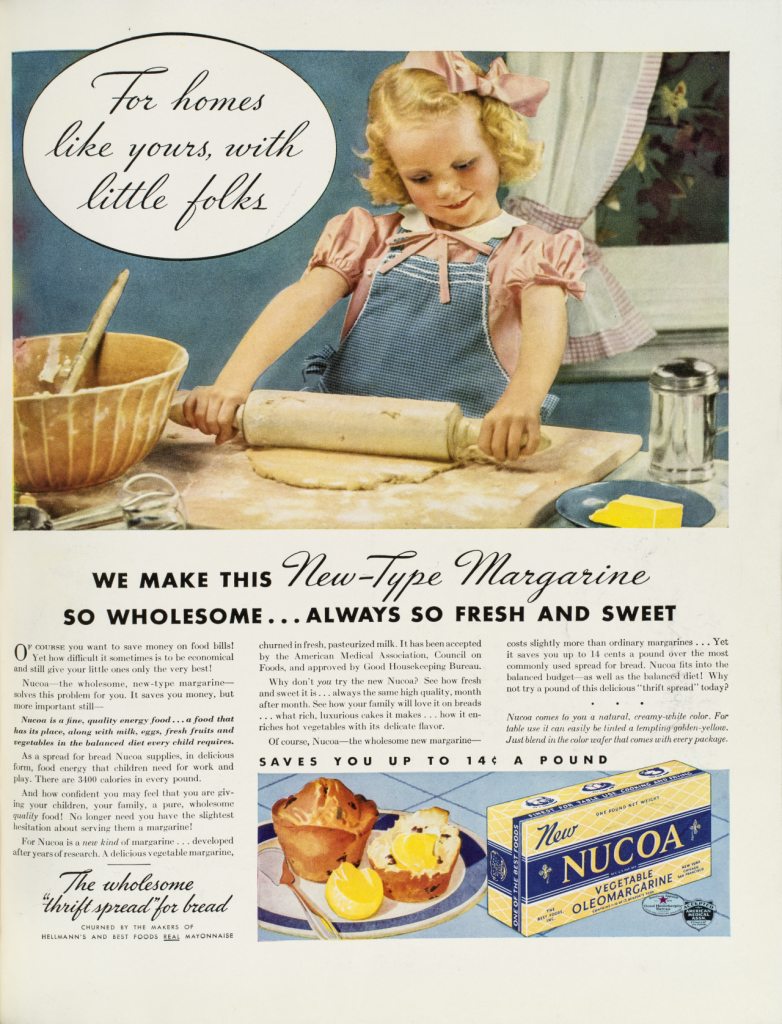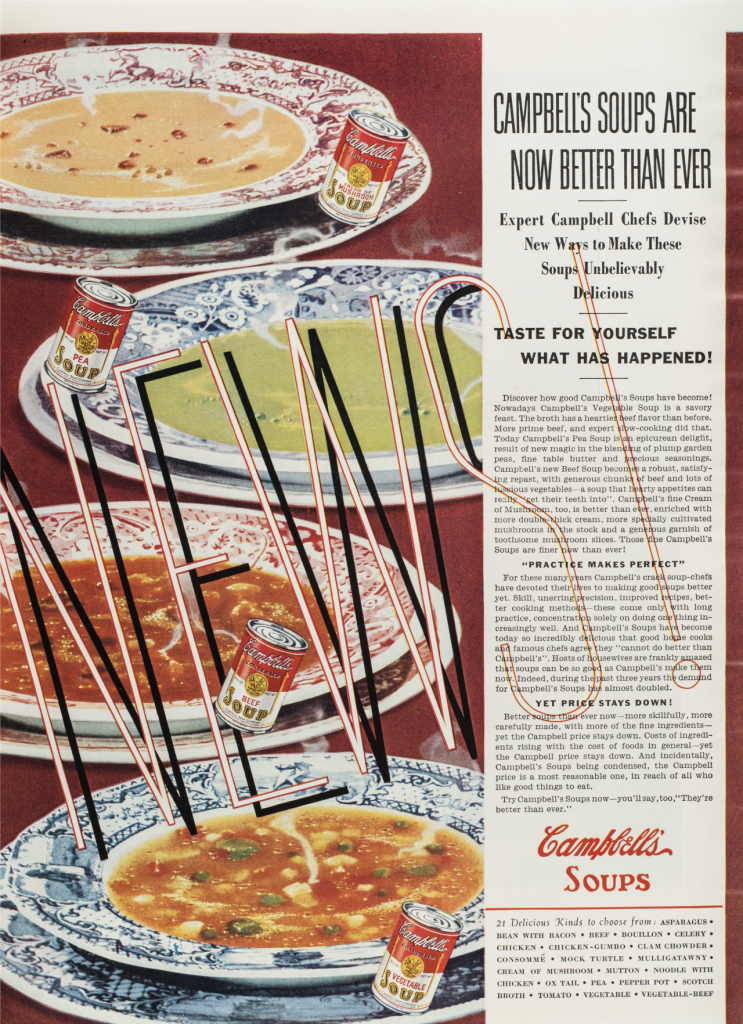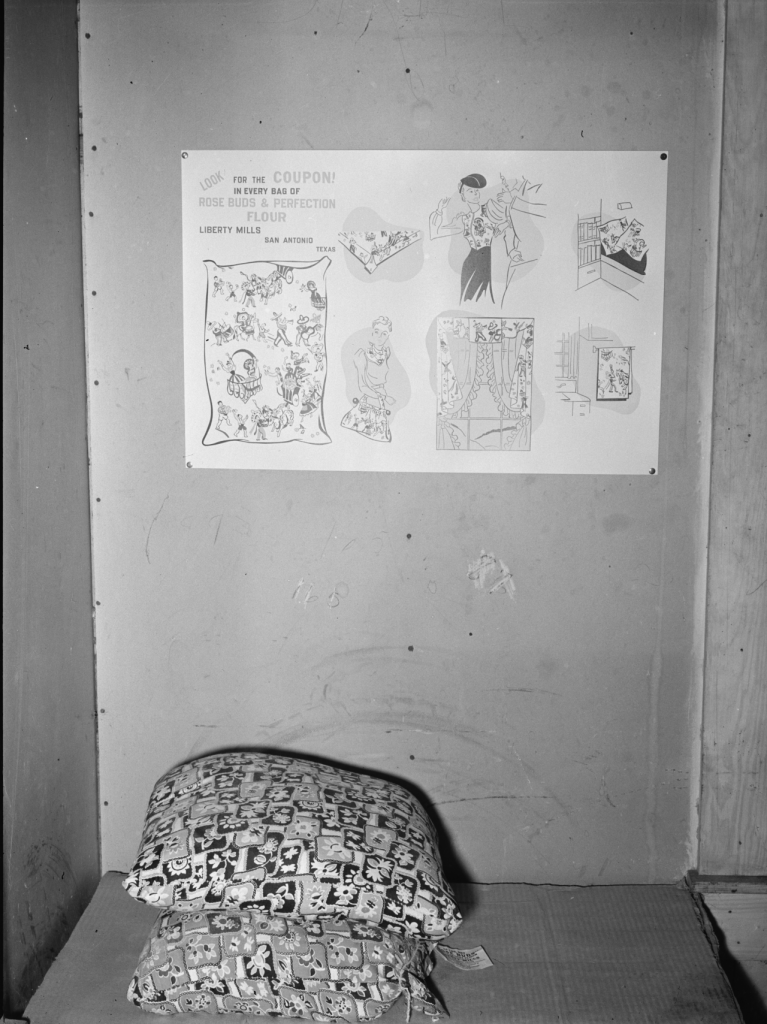Background
Although many married women entered the paid workforce during the Great Depression, most continued to focus solely on running the home. The new economy made managing a household budget more challenging than ever. Housewives needed to be thrifty, creative, and resourceful.
Expectations for healthy homes continued to be high, and that responsibility continued to fall on women. Children needed to be fed not just food, but nutritious and wholesome meals. Even middle-class housewives who were relatively financially stable felt the stress of needing to do more with less each and every day.
Companies that sold mass-produced foods like margarine, mayonnaise, and canned soup responded to these needs by emphasizing how their products helped housewives accomplish their goals. Basic foodstuffs like milk, eggs, vegetables, and meat were expensive. Advertisements argued processed foods combined with basic goods stretched a home budget. Canned soup, for example, could be mixed with other ingredients to create a casserole. Or fresh homemade biscuits could be made with margarine, a cheaper butter substitute.
About the Image
The first resource is an advertisement for margarine. The second is for Campbell’s canned soup. Both advertisements emphasize the health and cost benefits of consuming the product.
The third resource is a poster teaching women how to reuse large flour sacks. Housewives often bought flour in large quantities because it was inexpensive and could be used as the basis for stomach-filling breads, biscuits, and gravies. To attract buyers, flour companies printed decorative patterns on their bags. Housewives used this fabric to make dresses, pillows, and stuffed animals for their children.
Vocabulary
- ephemera: Items like ads, posters, and tickets that are cheaply made to exist for a short time.
- margarine: A substitute for butter made with vegetable or animal fat.
- Nucoa: A brand of margarine.
- thrifty: Spending less money through smart and creative ideas.
- wholesome: Healthy and clean.
Discussion Questions
- What information does the margarine advertisement provide? Why was margarine a wise choice for housewives?
- What do you notice about the image in the margarine advertisement? How does this picture reinforce gender stereotypes for women and girls?
- What could women make with recycled flour sacks? Why did women use flour sacks to make these items?
- Why do you think flour companies sold their flour in such beautiful bags?
- How do these two resources “speak” to one another? What do they tell you about the challenges of house work in this era?
Suggested Activities
- Combine these resources with the Wisconsin Senate committee report on married women. Consider how married women faced challenges wherever they went—at home and at work.
- Study the evolution of housework and how it changed during the crises of the 1930s and ’40s by combining this resource with advertisements from the Progressive Era, the time chart from an Oregon housewife, and the homemaker’s guide to war.
- Compare the margarine advertisement with the Progressive Era electric appliance ad. Both appeared in Life magazine. Discuss their similarities and differences.
- Combine this resource with photographs of sharecroppers and the militant housewives’ strike cartoon to consider how the Depression shaped the lives of housewives in different settings.
Themes
DOMESTICITY AND FAMILY









